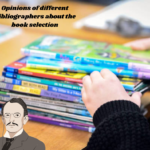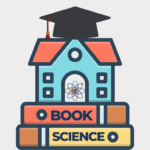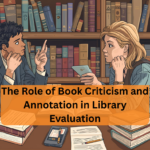OCLC started its journey in 1967 as the Ohio College Library Center. The purpose was to share resources and network among university libraries in the state of Ohio, USA. OCLC is a Vedic “cooperative” based library initiative. OCLC has more than 16,500 member libraries in 113 countries. These libraries share various information materials such as books, videos, serial publications, articles, music, e-books, cultural materials, digital resources, and websites through OCLC. OCLC has 1,200 employees and offices in seven countries. More than 72,000 libraries in 170 countries regularly use OCLC services. OCLC is a completely technology-based organization. More than 500 technicians work at OCLC. There are OCLC technology-based data and engineering centers in Australia, Canada, Germany, the Netherlands, the United Kingdom and the United States. OCLC processes more than 40 million search requests.

OCLC services:
1. Library management services
a) WorldShare Management Services: This is the first cooperative management service in the library sector. This service ensures that libraries can improve the quality of services by saving time and resources within limited resources. Libraries using this service can share data and work with each other. Some of the services: WorldShare Accusation, WallShare Circulation, WordShare Collection Evaluation.
B) WorldShare License Manager: Helps a library manage various electronic information resources licensed (the library acquires the right to use those resources through a license). By storing all licenses centrally, staff can quickly find the information they need. This program helps with statistical information in negotiating licenses with content providers.
2. Cataloging and Metadata
A) Copy Cataloging: Through this service, OCLC catalog data can be copied and downloaded for use by member libraries. For this, first the master catalog record of the desired item is retrieved by searching the WorldCat database. Then a copy of the master record is made and after completing the necessary changes and modifications of the library, the copy can be downloaded for use by the library’s own library automation system. Later, if any update is made to the original record, the library record is updated accordingly.
B) New Record Input: If the desired record is not found in a WorldCat search, input forms can be used to insert new records. These forms provide for the input of commonly used fixed and variable length data. There are eight types of data entry forms for recording eight types of data: books, computer files, maps, mixed materials, notations, serials, audio materials, and visual materials. Detailed rules and guidelines are provided for catalogers on when to input new records and under what circumstances it is not appropriate to input new records. New records can be inserted using the MARC record format or the Dublin Core template.
C) Transcription:A library may also have a system in place to create new machine-readable records for older materials as part of the retrospective conversion process. In these cases, cataloging data is typically transcribed from shelf list cards. The OCLC has detailed policies and guidelines to assist catalogers in transcribing these records.
D) WorldCat: WorldCat is the world’s largest union catalog, maintained by OCL members around the world. It consists of catalogs from about 72,000 libraries, containing about 2.3 billion records.
By using WorldCat, libraries can avoid the hassle of cataloging themselves. They can also keep track of various updates in WorldCat. As a result, their catalogs are always updated.
E) WordShare Metadata Services: A complete system for managing metadata of printed, licensed and digital information resources of libraries. It ensures effective management and sharing of metadata.
F) WorldShare Collection Manager: With this, libraries can build their own knowledge base or knowledge repository. It helps to keep electronic information resources in the library always updated. Readers can quickly find the information they need by using the library’s own interface.
3. Classification Services:
A) Dwey Services: OCLC works under the supervision of DDC, the world’s most popular classification system. DDC has been translated into 30 languages and is used by about two lakh libraries in 135 countries around the world. DDC is also used to publish national bibliographies in 60 countries. OCLC maintains both print and web versions of DDC. 4. Resource Sharing Services
B) WorldShare ILL: More than nine thousand libraries around the world use OCLC’s resource sharing network. This network, known as WorldShare ILL, is the world’s largest interlibrary loan network. Users of these libraries get the necessary information resources from a huge database cheaply and easily. Iliad: All circulation activities and document delivery services of a library can be centrally managed through Iliad. In addition, Iliad helps to automate interlibrary cooperation. With the help of Iliad, library users can also know the current status of their ‘loan requests’ for various materials.
4.Discovery and Syndication Services:
A)WorldCat.org: This service is provided by OCLC member libraries to disseminate catalog data to Internet users via the Web. By searching WorldCat.org, information seekers can find out which libraries near them have the information they are looking for.
B) Worldcat Discovery Services: This is a cloudbase application that allows simultaneous searches of more than 1.9 billion electronic, digital, and printed information resources. The Discovery interface can conduct fast and effective searches across various types of information resources. 5. Digital Collection Management
5. Digitization and Preservation Services:
OCLC helps in providing the technology, infrastructure, resources, and services necessary for building digital collections and managing them properly. Using this service, libraries can collect digital information resources and use various sources of digital information correctly. It also provides the art of adapting to the latest advances in digitization technology.
A. ContentDM: A special service provided for the development and management of digital collections in libraries. With the help of this, the library’s digital collection can be connected to the web. ContentDM helps in the formation and management of digital libraries by using various advanced tools.
B. Digital Archive: OCLc provides the necessary services for digital preservation / digital archiving. OCLc automatically evaluates the quality and status of the library’s digital information resources by monitoring the digital files of the service recipient and gives a report on it. This report is called ‘health card’ in the language of OCLc.
6. Reference Service:
A. FastSearch Referral Service: The essence of the First Search Reference Service is that full text, index and bibliographic information data can be entered. Through this service, users can access nearly 10 million online articles stored on the World Wide Web and nearly 4,000 articles from electronic journals, library collections, and interlibrary loan collaborations. It also provides ready reference tools such as directories, almanacs, and encyclopedias.
B. QuestionPoint: QuestionPoint is a chat and email-based virtual reference service. It also has a rich knowledge base, reporting and analytics tools to assess the overall performance of a library’s reference services. Libraries participating in QuestionPoint are part of a 24/7 Reference Cooperative. Members of this cooperative can share staff and resources to provide reference services.



